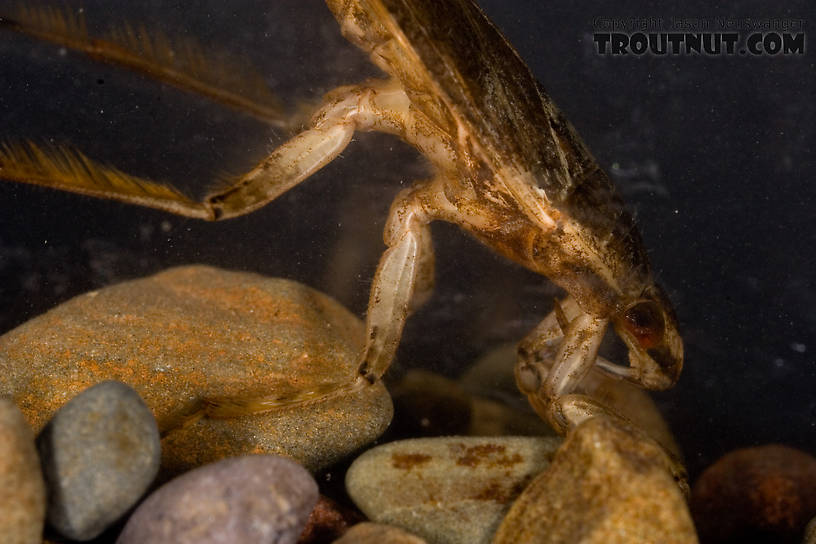Adaptation
As suggested by their collective common name, the "giant water bug", these insects of the family Belostomatidae are known for having the largest body size in their suborder, Heteroptera. As discussed in the Nutrition section, Belostoma flumineum have powerful, raptorial front legs (similar to those of a praying mantis) used for grasping their prey. The middle and hind legs are wide and equipped with hairs to aid in swimming (infoplease.com 2007). The adult form of this insect cannot breathe under water, so it has to periodically surface for air while hunting. To breathe, the bug uses two tubes protruding from the abdomen that stick out of the water while the rest of the brown, oval body suspended just below the surface.(eduwebs.org 2012) In this position, the electric light bug looks very similar to a dead leaf floating on top of the water. This camouflage protects it from predators such as birds.
Some distinctive features of this insect are it's sheer size, (they can grow up to two and three eighths inches long(infoplease.com 2007)) and the "X" pattern made by the wings when they are folded on its back (eduwebs.org 2012). Also if you are able to get a closer look, the sharp, piercing beak and unusual, raptorial front legs allow this organism to be easily identified.
Photon credit: Jason Neuswanger. toutnut.com
